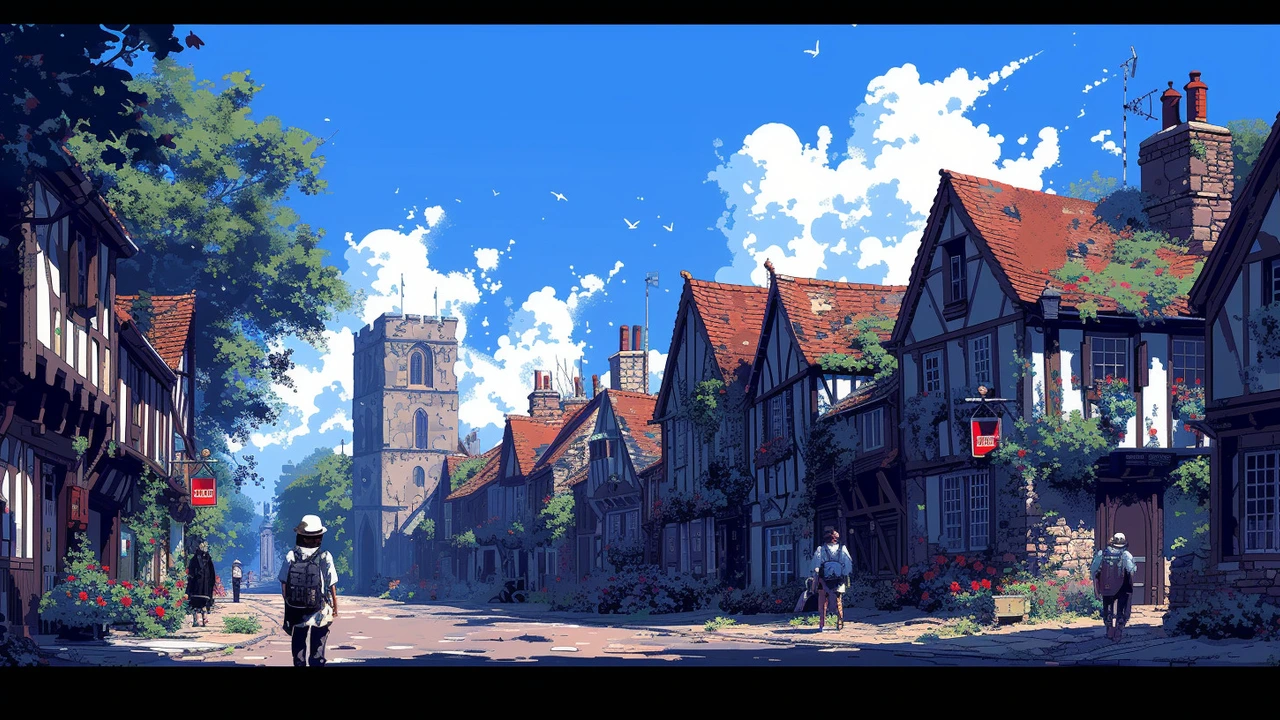Tudor Architecture: What to Look For and Why It Still Matters
Tudor architecture grabs attention fast. Those dark timber beams, steep roofs, and tall chimneys make houses look warm and storybook-like. If you like charming details and honest materials, Tudor buildings are worth studying — whether you're shopping for a house, traveling, or just curious.
Where Tudor style comes from
Tudor architecture began in England around the late 1400s and ran into the early 1600s. Original Tudors mixed old medieval building methods with new ideas after the Middle Ages. In the late 1800s and early 1900s the style came back as Tudor Revival, especially in the U.S. and parts of Europe. That revival copied the look but used modern tools and layouts for everyday living.
How to spot Tudor features
Want a quick checklist? Look for these telltale signs: steep, multi-gabled roofs; decorative half-timbering filled with stucco or brick; tall, narrow windows with small panes and leaded glass; massive, often patterned brick chimneys; arched doorways or Tudor arches; and stone or brick lower walls with timber above. Inside, expect exposed wood beams, plaster walls, and a big fireplace or inglenook that anchors the room.
Don’t confuse Tudor Revival with original Tudor structures. Revivals often have modern floor plans, larger windows, and newer materials. But visually they keep the same character touches that people love.
Materials matter. Traditional Tudors used oak timbers, wattle-and-daub or plaster, and stone. Reproductions use brick, stucco, and manufactured timber trim. If you’re evaluating a house, check whether the timbers are structural or decorative — fake timbers won’t rot the same way, but original wood needs more care.
Function meets style in Tudor chimneys. They’re not just decorative; older homes used big fireplaces for heat. In revivals, chimneys are often built for effect and sometimes hide modern flues. That’s why checking the chimney’s condition is smart before you buy.
Windows are another giveaway. Small leaded panes and diamond-shaped lattices are common. Replacing them with large single panes kills the look and can hurt value. If you need better insulation, consider storm windows or secondary glazing that preserve the original appearance.
Thinking about repair or renovation? Hire someone with experience in old houses. Match materials when you can: lime mortar for brick repointing, breathable plasters, and proper timber treatments. Modern sealants and cement can trap moisture and cause damage over time.
Last tip: curb appeal tells a lot. Look at roof pitch, chimney profile, and how the front door sits in the façade. Those elements often decide whether a house reads as true Tudor or just a themed copy.
Tudor architecture mixes history and homey details. Once you know what to look for, spotting genuine features becomes easy — and if you own one, you’ll know how to keep its character alive without breaking the bank.

Celebrating the Richness and Diversity of Tudor Architecture
In my recent exploration, I've been absolutely tickled pink by the grandeur and variety of Tudor Architecture! These architectural gems, dating from the playful, yet somehow regal, time of the Tudors (1485-1603), are a delightful mishmash of styles, materials, and design motifs. From charming half-timbered houses, popping up like a scene from a fairy tale, to imposing stone castles with their majestic appeal - the range is simply astounding! It's like diving into a hearty architectural fruit salad, each bite offering a new surprise. So, let's put on our explorer hats and join the jolly jamboree, celebrating the rich, diverse, and slightly quirky world of Tudor architecture!
Read more
The Timeless Charm of Tudor Architecture: What Makes it Unique?
Oh, darling, let's dive into the enchanting world of Tudor architecture, shall we? This style is like the little black dress of the architectural world - timeless, chic, and oh-so-unique! With its steeply pitched roofs, half-timbering, and distinctive diamond-shaped window panes, Tudor architecture is like a fairy-tale brought to life. It's like if a gingerbread house and a castle had a baby, and it turned out to be the most charming house on the block! So let's pop on our imaginary top hats, take a whimsical walk down the lanes of history, and appreciate the enduring allure of Tudor architecture!
Read more
The Enduring Legacy of Tudor Architecture
Well, hello there architecture enthusiasts! Let's take a time travel trip back to the 16th century, where the Tudor style was all the rage! Alright, it's no secret that this architecture style has left a long-lasting legacy, right? I mean, those charming half-timbered houses, steeply pitched roofs, and unique diamond-shaped window panes are so unforgettable! It's like a fairytale! It's no wonder that this architectural style is still replicated today. So, hats off to the Tudors for giving us a style that’s enduring, enchanting, and oh-so-elegant!
Read more